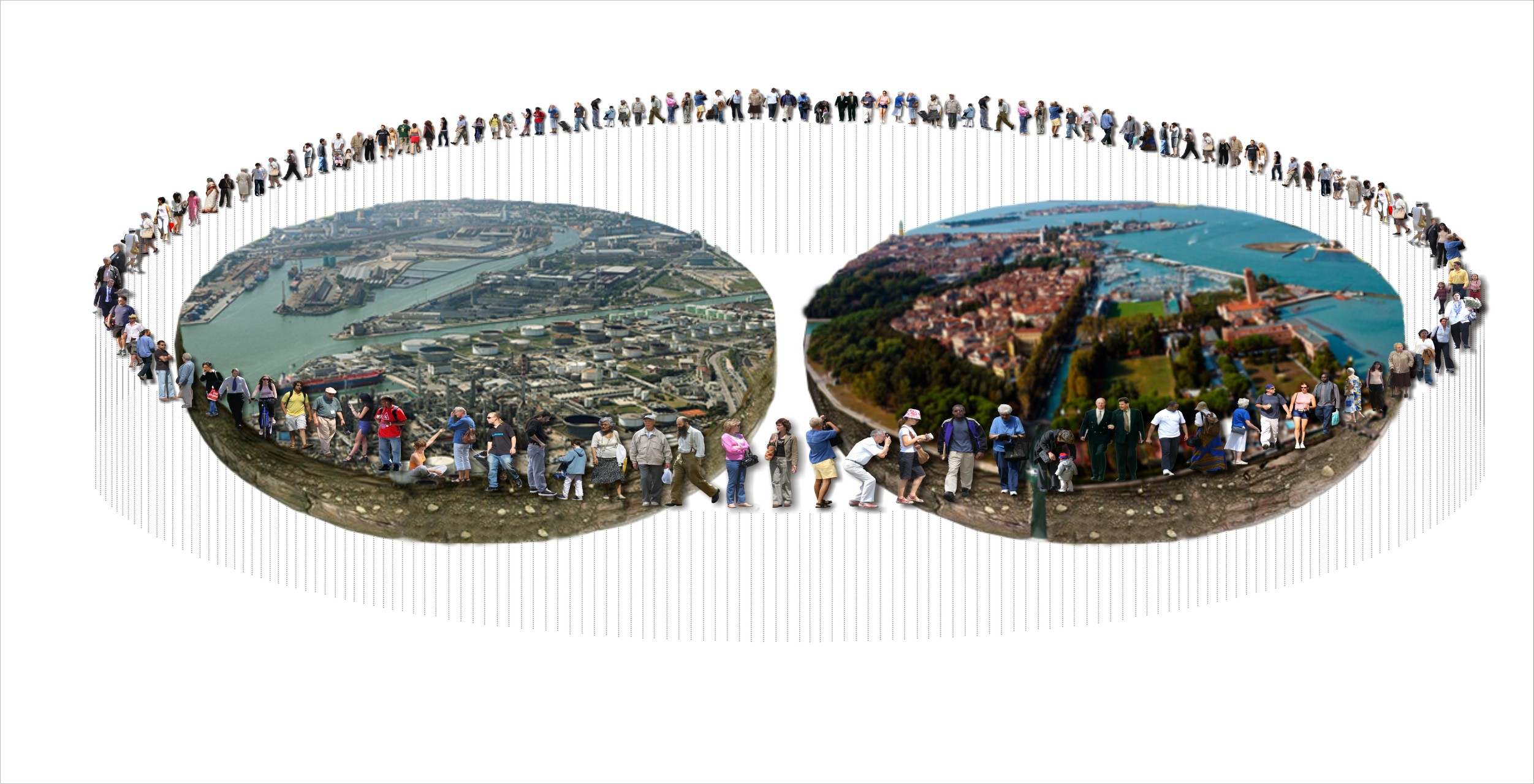Professor
Enrique Fernández + Karen Sanabria Ortega + Idamnis Monteagudo[CU]
Assistants
Gabriel José Maria Ferro, Caterina Villani, Silvia Maroso

A NEW HARMONY
Human societies have used nature mainly as resources, this behavior was deepened and it hurried extraordinarily starting from the Industrial Revolution, became unsustainable with the planetary environmental aggression, reflected in the climate changes, threatens the existence of human beings. It is necessary to create a new starting point that it puts the aim in their survive, with a very different relationships with nature, considering it not only as resource, but as a way of coexistence, relying on the cultural sedimentations that allows the cohabit with nature, discarding the cultural inheritances that oppose to it.
The region of Venice has been transformed until extreme and complex environmental un-sustainably, in its territories and social life. The city of Venice, a jewel of the world patrimony is in the vortex of the problem.
In a fragile environment, the lagoon surrounding it, under adverse forces which came from the industrial area in port Marghera, of the load movements and of the marine traffic, precise to find ways that allow to go gradually toward a new balance society-nature.
The research of a NEW HARMONY starts from knowledge of the reality, following a strategy that goes from the territorial scale to the urban one and the architectural one, starting from the contents that are structured as follow:
-Relate internal-external of the metropolitan area of Venice: city centers, spatial bonds, internal ways of transport; barriers that oppose to the spatial bonds; environmental qualities; external bonds, and ways transport.
-Industrial area of Port Marghera and contiguous areas: free areas, areas that are liberated by obsolescence of original functions, existent constructions that can be remade, conditions for the decontamination
-Intervention areas: specific proposals for the decontamination, compatible uses, public spaces and of social participation, infrastructures, appropriate technologies, and expressions of the materiality.
It is sought that each thematic block has exits and specific results that go from the documentation of the actual situation of the metropolitan area, until the proposal of alternative to long and short terms of the industrial area, and the design of details, urban and architectural, of the intervention area. The students will be able to use all the means of graphic expression that consider, plans, outlines, pictures, photomontages, videos, among other. The work will be organized in teams that will be able to vary in composition in correspondence with the thematic described blocks.
A NEW HARMONY
Le società hanno da sempre usato la natura principalmente come risorsa, comportamento che amplificandosi ha accelerato uno straordinario siluppo a partire dalla Rivoluzione Industriale, ma che è diventato insostenibile con danni ambientali che si riflettono nei cambiamenti climatici che micacciano l’esistenza umana. È necessario un nuovo punto di partenza che ponga l’obbiettivo della sopravvivenza della natura con un rapporto diverso, che la veda non solo come risorsa, ma come convivenza, basandosi sulle sedimentazioni culturali che permettono di coabitare con la natura, scartando le eredità culturali che vi si oppongono.
L’area di Venezia è stata trasformata fino a livelli estremi di insostenibilità ambientale, nei suoi territori e nella sua vita sociale. La città di Venezia, gioiello del patrimonio mondiale, è nel vortice di questo problema.
In un ambiente fragile, quello della laguna che la circonda, sotto forze avverse provenienti dalla zona industriale di Porto Marghera, dei movimenti di carico e del traffico marittimo, si possono definire modalità che permettano la transizione graduale veso una un nuovo equilibrio tra società e natura.
La ricerca di una NUOVA ARMONIA riflette sulle conoscienze della realtà, seguendo una strategia che va dalla scala territoriale, a quella urbana, a quella architettonica, partendo dai contenuti seguenti:
-Relazionare l’interno e l’esterno dell’area metropolitana di Venezia: centri città, legami spaziali, modalità di trasporto interne, barriere che si oppongono ai legami spaziali, qualità ambientali, legami esterni, mezzi di trasporto
-L’area industriale di Porto Marghera e le sue aree contigue; aree libere, aree liberate dall’obsolescenza delle funzioni originali, costruzioni esistenti rifacibili, condizioni per la decontaminazione
-Aree di intervento: specifiche proposte per la decontamizazione, usi compatibili, spazi pubblici e di partecipazione sociale, infrastrutture, tecnologie appropriate, espressioni della materialità.
Si cercherà di fare in modo che ogni blocco tematico si sviluppi e risultati specifici che vanno dalla documentazione della condizione attuale dell’area metropolitana, fino alla proposta di un alternativa a breve e lungo termine per l’area industriale, progetto dei dettagli, urbani e architettonici e delle aree di intervento.
Gli studenti potranno usare utilizzare qualunque mezzo di espressione grafica come piante, schemi, immagini, fotomontaggi, video. Il laoro verrà organizzato in gruppi che avranno composizione variabile a seconda della corrispondenza con i blocchi tematici descritti.
